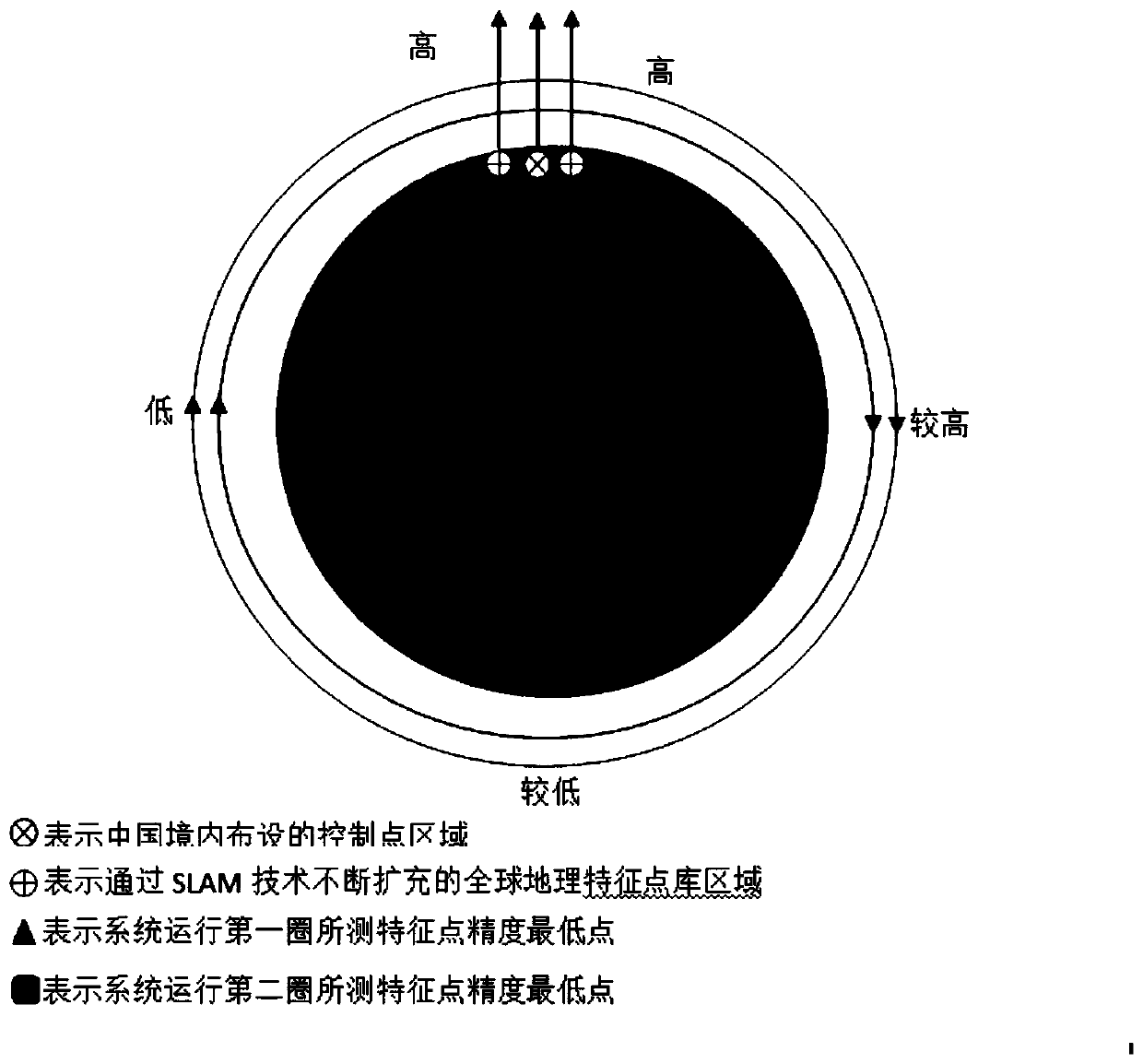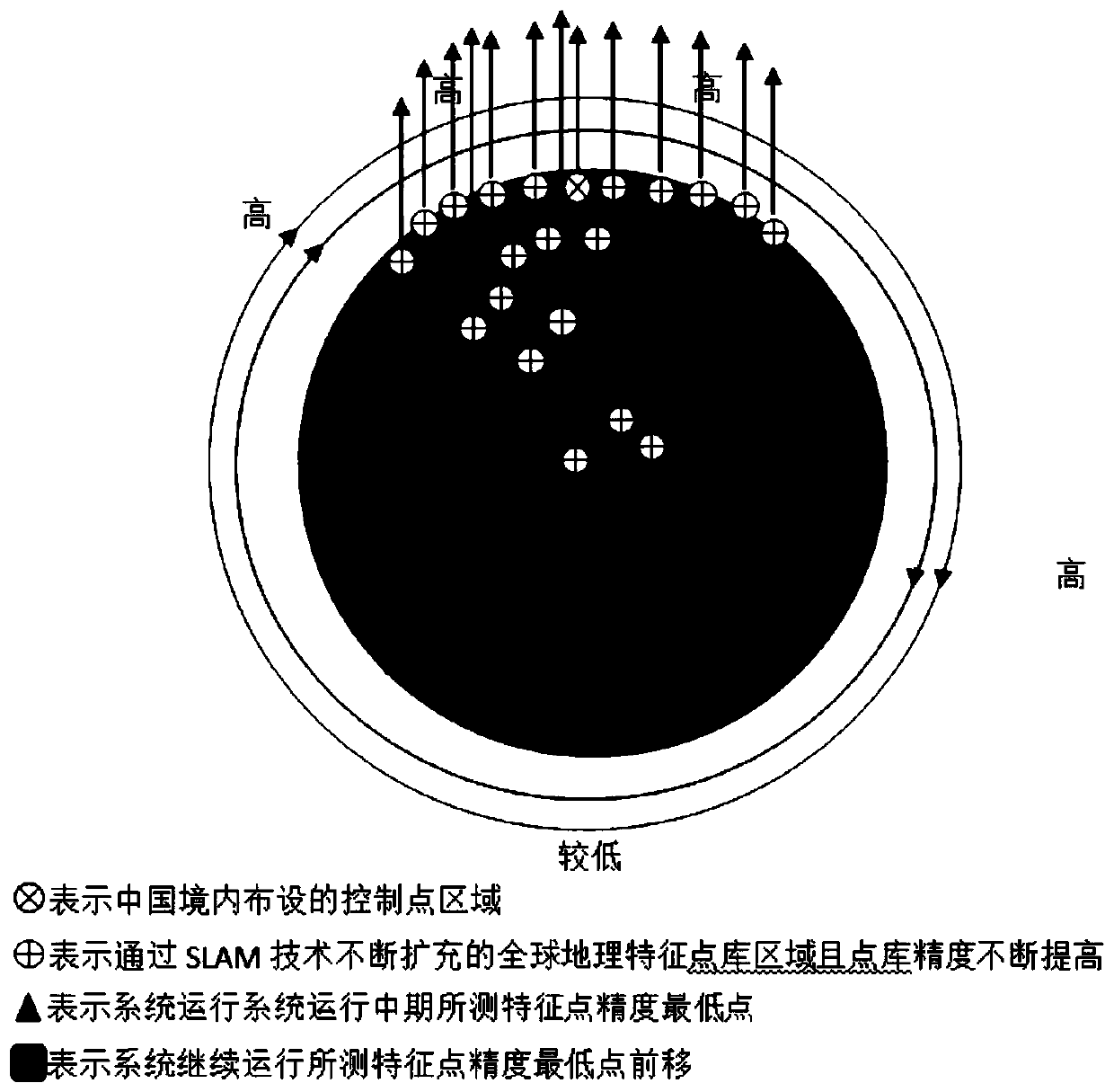Low-orbit satellite autonomous orbit determination and attitude determination method based on non-navigation satellite signals
A technology for autonomous orbit determination and low-orbit satellites, applied in the field of satellite navigation, can solve problems such as the inability to use observation data from ground-based tracking stations, and achieve good response capabilities and ensure accuracy
- Summary
- Abstract
- Description
- Claims
- Application Information
AI Technical Summary
Problems solved by technology
Method used
Image
Examples
Embodiment Construction
[0062] The principles and features of the present invention are described below in conjunction with the accompanying drawings, and the examples given are only used to explain the present invention, and are not intended to limit the scope of the present invention.
[0063] The method of the present invention first lays out a certain number of feature points on the ground, and their geographical coordinates are measured in advance by a certain method, and then these feature point images and their geographical coordinates are stored in the on-board processing center; at the same time, the star distribution is drawn by a certain method The map is stored in the on-board processing center to form the navigation star reference library. The star sensor and remote sensing camera are installed on the low-orbit satellite. The star sensor camera captures the star map and performs star point extraction and star point coordinate calculation, and matches the image points formed by the star wi...
PUM
 Login to View More
Login to View More Abstract
Description
Claims
Application Information
 Login to View More
Login to View More - R&D
- Intellectual Property
- Life Sciences
- Materials
- Tech Scout
- Unparalleled Data Quality
- Higher Quality Content
- 60% Fewer Hallucinations
Browse by: Latest US Patents, China's latest patents, Technical Efficacy Thesaurus, Application Domain, Technology Topic, Popular Technical Reports.
© 2025 PatSnap. All rights reserved.Legal|Privacy policy|Modern Slavery Act Transparency Statement|Sitemap|About US| Contact US: help@patsnap.com



